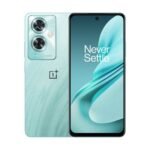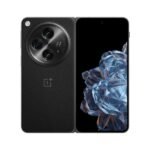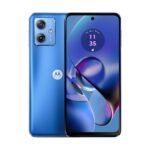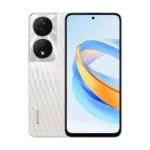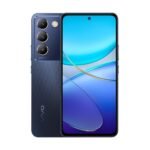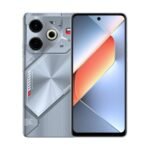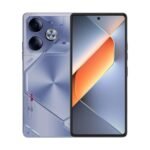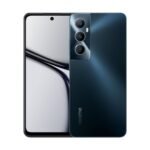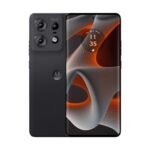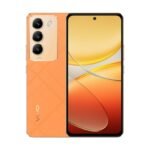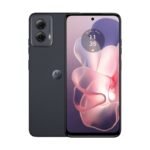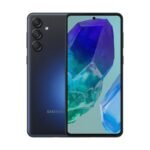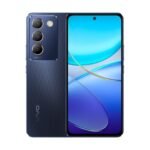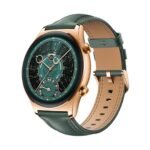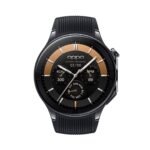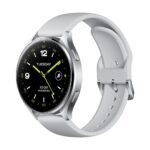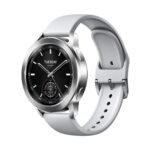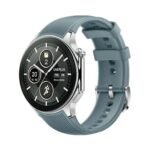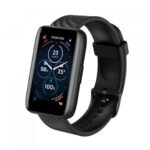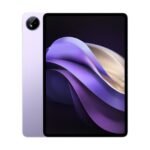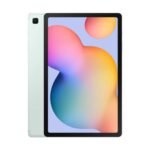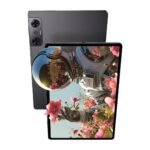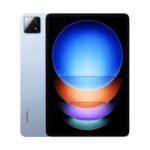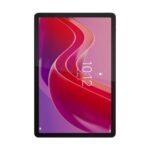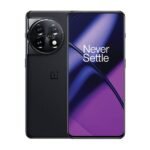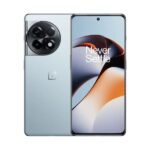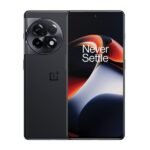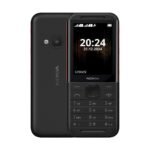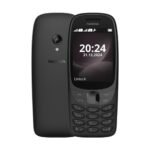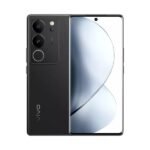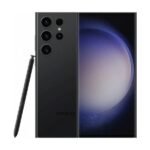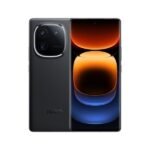- Home
- Products
- Smartphone
- OnePlus 12R
OnePlus 12R
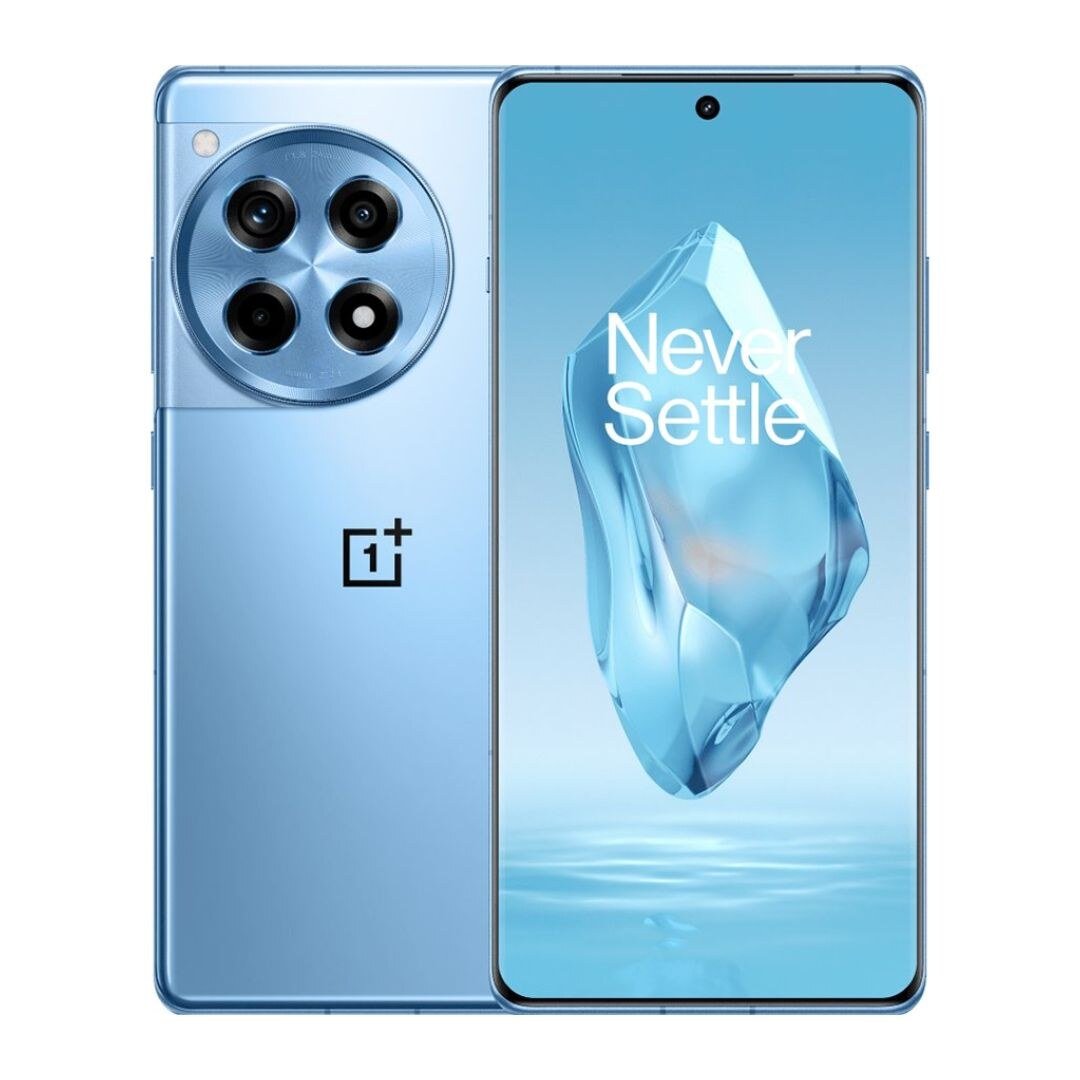
Specification
NETWORK
| Technology Mobile technology has evolved through multiple generations: 2G (introduced in 1992) pioneered digital encryption, data services, and SMS; 3G boosted data rates, introducing video calls; 4G provided ultra-broadband internet access, ideal for smartphones and wireless modems; and now, 5G, the fifth generation, promises remarkable advancements. With speeds up to 10 times faster, 50 times lower latency, and increased capacity, 5G facilitates a wide array of applications, transforming mobile connectivity. From powering smart cities to enabling augmented reality, 5G represents a paradigm shift, offering unparalleled speed, responsiveness, and connectivity for diverse devices and applications in the modern digital landscape. | GSM / CDMA / HSPA / LTE / 5G |
| 4G Support 4G, or fourth-generation wireless technology, revolutionized mobile communications with faster data speeds and improved connectivity. It operates on Long-Term Evolution (LTE) networks, offering peak download speeds of up to 100 Mbps and upload speeds of 50 Mbps. This advancement enables seamless multimedia streaming, video calls, and high-speed internet browsing on smartphones and other mobile devices. 4G also enhances network efficiency, reduces latency, and supports a wide range of applications, from mobile gaming to IoT devices. Its widespread adoption has transformed how people communicate and access information, laying the groundwork for further technological innovations in the realm of wireless connectivity. | Yes |
| 4G Bands 4G is the fourth generation of mobile phone communications standards. It is a successor of the 3G and provides ultra-broadband internet access for mobile devices. The high data transfer rates make 4G networks suitable for use in USB wireless modems for laptops and even home internet access. | 1, 2, 3, 4, 5, 7, 8, 12, 17, 18, 19, 20, 26, 28, 32, 38, 39, 40, 41, 66 |
| 5G Support 5G, or fifth-generation wireless technology, revolutionizes mobile communication with unprecedented speed, low latency, and enhanced capacity. Operating on higher frequency bands, 5G enables data transfer rates up to 20 gigabits per second, facilitating seamless connectivity for the Internet of Things (IoT), augmented reality, and autonomous vehicles. With reduced latency of around 1 millisecond, 5G ensures near-instantaneous response times, crucial for applications like remote surgery. This transformative technology promises to redefine industries, powering smart cities, ultra-high-definition streaming, and innovative services yet to be imagined, heralding a new era of connectivity, efficiency, and technological advancement. | Yes |
| 5G Bands 5G is the fifth generation of mobile phone communications standards. It is a successor to 4G and promises to be faster than previous generations while opening up new uses cases for mobile data. The 5G benefits range from faster speeds (up to 10x faster), much lower latency (up to 50x lower) and greater capacity allowing many more devices to be connected at the same time. | 1, 2, 3, 5, 7, 8, 12, 20, 28, 38, 40, 41, 66, 77, 78 SA/NSA |
| Speed Mobile speed has evolved through generations, starting with analog cellular phones and progressing to digital (2G). The third generation (3G) is characterized by high data speeds, persistent data access, and enhanced voice capacity. The standout feature is the impressive data speeds, facilitating advanced functionalities like live streaming video. Various standards govern mobile technology, with UMTS, based on WCDMA, being prevalent in 3G. As technology advances, 4G and 5G bring further enhancements, promising faster and more reliable connections for an increasingly connected world. The terms WCDMA and UMTS are often used interchangeably in describing these mobile communication standards. | HSPA, LTE-A (CA), 5G |
LAUNCH
| Announced | 13 January, 2024 |
| Status | Available. Released 2024, February 06 |
DESIGN
| Dimensions Phone/Tablet dimensions encompass various measurements, crucial for user comfort and design aesthetics. These typically include height, width, and thickness, expressed in millimeters. The height defines the device's vertical size, the width its horizontal expanse, while thickness measures how slim or bulky it appears. Additionally, screen size, presented in inches, influences the overall device footprint. Compact dimensions enhance portability, fitting snugly in pockets, while larger sizes provide expansive screens for multimedia experiences. Manufacturers meticulously balance these dimensions to achieve a harmonious form factor, catering to diverse user preferences and technological requirements in the dynamic landscape of mobile devices. |
163.3 x 75.3 x 8.8 mm (6.43 x 2.96 x 0.35 in) |
| Weight The "Weight" specification provides the mass of the phone in grams. This crucial metric influences the device's portability and user experience. Manufacturers occasionally withhold this information until the phone hits the market, but diligent efforts are made to promptly update the field. Monitoring weight is vital for consumers, offering insights into device comfort and ease of use. It plays a role in users' preferences, especially for those seeking lightweight or more substantial handsets. As technology evolves, ensuring this detail is accurate and up-to-date remains a priority for comprehensive mobile phone specifications. | 207 g |
| Build The build of a phone encompasses the meticulous selection of construction materials, methods, and finishes by the manufacturer. It involves a careful balance of aesthetics and functionality. Colors, akin to fashion trends, evolve with each launch, influencing the device's appearance. Materials like glass permit seamless radio wave transmission for wireless charging, yet can compromise durability. Aluminium, glass, and ceramics mark contemporary construction trends, each imbued with unique properties and limitations. The build reflects a synthesis of design innovation and engineering pragmatism, harmonizing form and function in the ever-evolving landscape of mobile technology. | Glass front (Gorilla Glass Victus 2), aluminum frame, glass back |
| SIM The mobile SIM, or Subscriber Identity Module, is a small card inserted into mobile phones to authenticate and identify users on a cellular network. Typically, it stores essential information like the user's phone number, contacts, and text messages. SIM cards also facilitate secure communication by encrypting data between the device and the network. There are various types, including standard, micro, and nano SIMs, differing in size. They play a crucial role in enabling voice calls, text messaging, and mobile data access. As technology advances, embedded SIMs (eSIMs) are emerging, eliminating the physical card for more streamlined connectivity. | Dual SIM (Nano-SIM, dual stand-by) |
| IPX IP rating, or Ingress Protection, on mobile devices denotes their resistance to dust and water. The rating consists of two digits; the first indicates solid particle protection, while the second denotes liquid ingress resistance. For example, an IP68 rating signifies a high level of dust protection and water submersion resilience. The "6" in IP68 indicates complete protection against dust, and the "8" signifies the device can withstand continuous submersion in water beyond 1 meter. This ensures durability in various environments, safeguarding mobile devices from potential damage caused by dust or water exposure, enhancing their reliability and longevity. | IP64, waterproof and dustproof |
DISPLAY
| Type Mobile displays come in various types, including LCD (Liquid Crystal Display), IPS-LCD (In-Plane Switching Liquid Crystal Display), OLED (Organic Light-Emitting Diode), and AMOLED (Active-Matrix Organic Light-Emitting Diode). LCDs rely on a backlight to illuminate liquid crystals, offering visibility in sunlight. IPS-LCDs, common in mid to high-end phones, boast superior viewing angles and color reproduction. OLED and AMOLED, utilizing organic LEDs that emit light, eliminate the need for a backlight, resulting in potentially thinner panels. They deliver deep blacks, high contrast ratios, and enhanced visibility in low-light conditions, contributing significantly to the overall user interface experience. Display quality is evaluated based on factors like contrast ratio, color calibration, brightness, and sunlight legibility. | LTPO4 AMOLED, 1B colors, 120Hz, HDR10+, Dolby Vision, 1600 nits (HBM), 4500 nits (peak) |
| Size Mobile size is commonly measured in inches, an industry standard for display length. The screen-to-body ratio is a crucial metric, indicating the proportion of the front occupied by the display versus bezels. A higher ratio signifies narrower bezels, maximizing the screen's prominence. This not only enhances the device's aesthetic appeal but also provides a more immersive visual experience. Consumers often prioritize a balance between a compact device and a generous display, making size an essential factor in mobile design and user preference. This interplay between dimensions and screen real estate influences the overall usability and attractiveness of mobile devices. | 6.78 inches, 111.7 cm2 (~90.9% screen-to-body ratio) |
| Resolution Resolution in the context of mobile devices pertains to the number of pixels on a display or camera sensor, impacting image clarity. It's not about physical size but pixel count, determining visual quality. Higher resolution means more pixels, enabling detailed visuals. This factor is distinct from size; two displays of the same resolution can vary in dimensions. Pixel density, measured in pixels-per-inch (ppi), complements resolution. A smaller display with the same resolution boasts higher pixel density, enhancing clarity and detail, albeit with smaller graphics. In essence, resolution defines the sharpness and richness of visual content on mobile screens and cameras. |
1264 x 2780 pixels (~450 ppi density) |
| Protection Mobile device protection focuses on safeguarding screens from scratches and impacts. With the trend of larger touchscreen displays, the demand for robust screen covers has risen. Chemically hardened glass, exemplified by Corning's Gorilla Glass, is a premium choice for high-end handsets. This glass provides superior scratch resistance, ensuring durability. Moreover, manufacturers apply oleophobic coatings to mitigate fingerprint smudges, enhancing user experience. These advancements collectively fortify mobile devices, preserving the integrity of their screens amidst daily usage and potential mishaps. | Corning Gorilla Glass Victus 2 |
PLATFORM
| OS A mobile operating system (OS) is the software that powers smartphones and tablets, managing hardware and providing a user interface. Key players include Android, developed by Google, known for its open-source nature and diverse app ecosystem. iOS, created by Apple, offers a closed ecosystem with seamless integration across devices and a curated App Store. Both prioritize security and regular updates. Other OS options include Microsoft's Windows for mobile and Linux-based alternatives. Mobile OSes govern device functionality, facilitate app execution, and influence user experience, shaping the digital landscape with their distinct features, security measures, and app ecosystems. | Android 14, OxygenOS 14 |
| Chipset A mobile chipset is a critical component that integrates various functions to enable seamless communication and performance in smartphones. Typically consisting of a central processing unit (CPU), graphics processing unit (GPU), and other specialized processors, it manages data flow, power consumption, and connectivity. Advanced chipsets incorporate multiple cores for enhanced multitasking, high-speed data transmission through technologies like 5G, and efficient power management for prolonged battery life. These components work in tandem to deliver a responsive user experience, support diverse applications, and facilitate connectivity with other devices, making the chipset a fundamental element in modern mobile technology. |
Qualcomm SM8550-AB Snapdragon 8 Gen 2 (4 nm) |
| CPU The mobile Central Processing Unit (CPU) serves as the brain of smartphones, handling computations and executing tasks. Typically built on advanced semiconductor technology, modern mobile CPUs integrate multiple cores, enhancing multitasking capabilities. Clock speeds, measured in gigahertz (GHz), dictate processing speed. Advanced instruction sets and cache memory improve efficiency. Mobile CPUs often incorporate power-efficient designs to optimize battery life, employing techniques like dynamic frequency scaling. Manufacturers like Qualcomm, Apple, and Samsung develop these processors, incorporating cutting-edge architectures and technologies to deliver responsive and energy-efficient performance, catering to the demanding needs of contemporary mobile applications and services. |
Octa-core (1x3.2 GHz Cortex-X3 & 2x2.8 GHz Cortex-A715 & 2x2.8 GHz Cortex-A710 & 3x2.0 GHz Cortex-A510) |
| GPU A mobile GPU, or Graphics Processing Unit, is a specialized processor designed for rendering graphics and enhancing visual performance in mobile devices like smartphones and tablets. It processes complex mathematical computations to render images and videos smoothly. Mobile GPUs integrate into system-on-chip (SoC) architectures, working in tandem with the device's CPU. These GPUs feature multiple cores, advanced shader units, and dedicated memory to handle demanding graphical tasks. Power efficiency is a key consideration for mobile GPUs, ensuring optimal performance without compromising battery life. Common mobile GPU manufacturers include Qualcomm Adreno, ARM Mali, and Imagination PowerVR. | Adreno 740 |
MEMORY
| Card Slot A card slot is a small opening or compartment in various devices designed to accommodate cards, typically in the form of memory cards, SIM cards, or credit cards. These slots serve as interfaces for data transfer, storage expansion, or connectivity. In electronic devices like smartphones, cameras, and laptops, memory card slots enable users to expand storage capacity, while SIM card slots facilitate mobile communication. Credit card slots are found in wallets or electronic payment devices, allowing users to make cashless transactions. The design and dimensions of card slots vary, but their fundamental purpose is to enhance functionality and user convenience. | No |
| Internal Internal storage in mobile devices refers to the built-in memory used to store system files, apps, and user data. It's non-removable and comes in capacities like 64GB, 128GB, etc. RAM (Random Access Memory) is volatile memory that the device uses for active tasks and processes, providing quick access for running applications. Typical mobile RAM sizes range from 4GB to 12GB, influencing multitasking capabilities. Both internal storage and RAM significantly impact a device's performance, affecting app responsiveness and the ability to handle multiple operations simultaneously. Choosing devices with ample storage and RAM is crucial for a smoother and more responsive mobile experience. | 128GB 8GB RAM, 256GB 16GB RAM |
| Storage Type Mobile devices often utilize advanced storage technologies like NVMe (Non-Volatile Memory Express) for faster data transfer, reducing latency. Meanwhile, the internal storage commonly employs UFS (Universal Flash Storage), known for its high-speed read and write capabilities. The latest standard, UFS 2.2, enhances performance, enabling quicker app launches and smoother multitasking. Random Access Memory (RAM) in mobiles, crucial for temporary data storage during active tasks, supports seamless operations. These technologies collectively optimize the mobile experience, offering swift data access, efficient multitasking, and improved overall performance for users. | UFS 4.0 - 256 GB | UFS 3.1 - 128 GB |
MAIN CAMERA
| Triple Camera The Triple Camera system in mobile devices integrates three distinct lenses to enhance photographic capabilities. Typically composed of a primary wide-angle lens for standard shots, a telephoto lens for optical zoom, and an ultra-wide-angle lens for expansive landscapes. This arrangement provides users with versatile shooting options, capturing detailed images with varying perspectives. The primary lens handles everyday photography, while the telephoto lens offers zoom capabilities without sacrificing image quality. The ultra-wide-angle lens widens the field of view, accommodating more content in a single shot. Together, these lenses empower users to explore diverse photography styles, ensuring flexibility and creativity in mobile photography. |
50 MP, f/1.8, 24mm (wide), 1/1.56", 1.0µm, PDAF, Laser AF, OIS 8 MP, f/2.2, 16mm, 112˚ (ultrawide), 1/4.0", 1.12µm 2 MP, f/2.4, (macro) |
| Features Mobile cameras have evolved to offer impressive features, capturing moments with exceptional clarity and creativity. High megapixel counts ensure sharp photos, while advanced image processing enhances colors and details. Night mode enables stunning low-light shots, and HDR optimizes dynamic range. Dual or triple-lens setups provide versatility, offering wide-angle and telephoto options. 4K video recording with stabilization delivers cinematic quality, and slow-motion modes add dramatic flair. AI-driven enhancements, like portrait mode and scene recognition, optimize settings for various scenarios. Additionally, advanced autofocus and optical zoom contribute to professional-level photography, making mobile cameras indispensable for capturing life's diverse moments with precision and artistry. | LED flash, HDR, panorama |
| Video The video on mobile cameras delves into the intricacies of smartphone photography, emphasizing the significance of camera specifications. It explores the role of the Image Signal Processor (ISP) in conjunction with hardware and software for enhancing images, encompassing features like face detection, filters, and geo-tagging. The discussion covers megapixels, clarifying that a higher count doesn't guarantee better quality but allows for cropping without losing detail. The Aperture's importance in light intake is explained, along with stabilization methods like Electronic Image Stabilization (EIS) and Optical Image Stabilization (OIS). Autofocus technologies, flash types, HDR, panoramic photography, and video capabilities are also detailed, providing a comprehensive guide to smartphone camera functionalities. | 4K@30/60fps, 1080p@30/60/120/240fps, gyro-EIS, OIS |
SELFIE CAMERA
| Single Camera The single camera in mobile devices is a compact imaging system designed for capturing photos and videos. Typically situated on the rear or front of the device, it employs a combination of lenses, sensors, and image processing algorithms to produce high-quality visual content. These cameras vary in resolution, often measured in megapixels, and feature auto-focus and digital zoom capabilities. Advanced models may incorporate technologies like image stabilization and low-light enhancement for optimal performance. The single-camera setup is versatile, facilitating various photography modes and video recording functionalities, contributing to the widespread popularity of mobile photography and the seamless integration of cameras into modern smartphones. |
16 MP, f/2.4, 26mm (wide), 1/3", 1.0µm |
| Features Mobile cameras have evolved to offer impressive features, capturing moments with exceptional clarity and creativity. High megapixel counts ensure sharp photos, while advanced image processing enhances colors and details. Night mode enables stunning low-light shots, and HDR optimizes dynamic range. Dual or triple-lens setups provide versatility, offering wide-angle and telephoto options. 4K video recording with stabilization delivers cinematic quality, and slow-motion modes add dramatic flair. AI-driven enhancements, like portrait mode and scene recognition, optimize settings for various scenarios. Additionally, advanced autofocus and optical zoom contribute to professional-level photography, making mobile cameras indispensable for capturing life's diverse moments with precision and artistry. | HDR, panorama |
| Video The video on mobile cameras delves into the intricacies of smartphone photography, emphasizing the significance of camera specifications. It explores the role of the Image Signal Processor (ISP) in conjunction with hardware and software for enhancing images, encompassing features like face detection, filters, and geo-tagging. The discussion covers megapixels, clarifying that a higher count doesn't guarantee better quality but allows for cropping without losing detail. The Aperture's importance in light intake is explained, along with stabilization methods like Electronic Image Stabilization (EIS) and Optical Image Stabilization (OIS). Autofocus technologies, flash types, HDR, panoramic photography, and video capabilities are also detailed, providing a comprehensive guide to smartphone camera functionalities. | 1080p@30fps, gyro-EIS |
SOUND
| Loudspeaker The mobile loudspeaker is a crucial component of smartphones, responsible for audio output during calls, media playback, and notifications. Typically located at the bottom or top edge, it employs electromagnetic principles to convert electrical signals into sound waves. Comprising a diaphragm, coil, and magnet, it vibrates in response to electrical signals, creating sound. The loudspeaker's efficiency influences audio quality, with advancements in technology enabling enhanced clarity and volume. Mobile manufacturers often integrate additional features, such as stereo setups or spatial audio, to optimize the user experience, making the loudspeaker a vital element for communication and multimedia on modern smartphones. | Yes, with stereo speakers |
| 3.5mm Jack The 3.5mm jack, also known as a mini-jack or headphone jack, is a ubiquitous audio connector standard. Measuring 3.5 millimeters in diameter, it features a cylindrical plug with three conductive metal bands. Widely used in audio equipment, smartphones, and portable devices, the jack serves dual purposes for stereo audio output and microphone input. The tip, first band, and second band correspond to left audio, right audio, and ground connections, respectively. Its widespread adoption in consumer electronics makes it a universal interface for headphones, speakers, and audio peripherals, fostering compatibility and convenience in the realm of audio connectivity. | No |
CONNECTIVITY
| WLAN Wireless Local Area Network (WLAN) refers to a type of mobile communication that enables devices to connect and communicate wirelessly within a limited geographic area, such as a home, office, or public space. Utilizing radio frequency signals, WLANs provide convenient and flexible access to the internet or local network resources. Commonly implemented using Wi-Fi technology, WLANs support various devices, including smartphones, laptops, and tablets. Security measures like WPA2/WPA3 encryption enhance data protection. The widespread adoption of WLANs has revolutionized mobile connectivity, offering users seamless and high-speed access to information and services while on the move. | Wi-Fi 802.11 a/b/g/n/ac/6/7, dual-band |
| Bluetooth Bluetooth is a wireless communication technology facilitating short-range data exchange between devices. Employing radio waves in the 2.4 GHz frequency band, Bluetooth enables seamless connections for data transfer, audio streaming, and device control. Developed for simplicity and low power consumption, it supports various applications, from hands-free calling in cars to wireless earphones and smart home devices. With advancements like Bluetooth Low Energy (BLE), it caters to diverse needs while maintaining energy efficiency. Bluetooth's ubiquity in modern electronics ensures interoperability, making it a cornerstone for wireless connectivity across smartphones, laptops, headphones, IoT devices, and more. | 5.3, A2DP, LE, aptX HD |
| Positioning Positioning in mobile refers to determining and tracking the geographical location of a mobile device. It utilizes a combination of technologies such as GPS, Wi-Fi, and cellular networks to pinpoint the device's coordinates. This functionality is integral for location-based services, navigation apps, and various applications that require real-time location data. Accurate positioning enhances user experiences, enabling features like location-based notifications, geotagging in photos, and route optimization. However, privacy concerns and the need for efficient power consumption in mobile devices pose ongoing challenges in the development and implementation of positioning technologies. | GPS, GALILEO, GLONASS, BDS, QZSS |
| NFC Support Near Field Communication (NFC) is a wireless communication technology facilitating short-range data exchange between devices, typically within 4 centimeters. Widely integrated into mobile devices, NFC enables secure contactless transactions, data transfer, and device pairing. Operating on the 13.56 MHz frequency, NFC utilizes electromagnetic induction to establish communication. It supports three modes: peer-to-peer, read/write, and card emulation. Commonly used for mobile payments, ticketing, and sharing information between smartphones, NFC enhances user convenience and connectivity. Its secure nature and ease of use make it a versatile technology for various applications, bridging the gap between physical and digital interactions. | Yes |
| Infrared Port The Infrared (IR) port on mobile devices is a communication interface that uses infrared light to facilitate wireless data exchange over short distances. Commonly found in older mobile phones, it allows for the quick transfer of files, contacts, and other data between devices. The IR port operates by emitting and receiving infrared signals, enabling a line-of-sight connection. While widely used in the past, it has become less prevalent with the rise of Bluetooth and other wireless technologies. Despite its decline, the IR port played a significant role in early mobile device connectivity, showcasing the evolution of mobile communication. | Yes |
| Radio The mobile radio is a compact communication device that enables wireless transmission and reception of audio signals. Commonly found in vehicles, it serves as a vital tool for instant communication. Operating on various frequency bands, mobile radios facilitate clear voice communication over considerable distances. Equipped with features like channel scanning, programmable buttons, and emergency alerts, they ensure efficient and reliable communication for emergency services, public safety, and businesses. These radios often include LCD displays for channel information and settings. Their portability and versatility make them indispensable for mobile communication in diverse settings, promoting seamless and effective information exchange. | No |
| USB USB (Mobile), or Universal Serial Bus, is a standard wired connection facilitating data transfer and power supply between electronic devices, notably mobile phones and desktop computers. The cable features a standardized connector on the computer end, while the mobile device end varies with options like miniUSB, microUSB, or proprietary connectors. USB 1.1 offers speeds up to 1.5 MB/s, while the faster USB 2.0 is approximately 40 times quicker. Backward compatibility exists, with speed limited by the slower device. Some phones support "mass storage" mode, simplifying data transfer without additional drivers. USB cables also serve as power conduits, enabling device charging and peripheral connectivity. | USB Type-C 2.0 |
FEATURES
| Sensors Modern smartphones boast an array of sensors for an enriched user experience. The Proximity Sensor conserves battery by deactivating the display when the phone is close to the user's ear. Accelerometers detect linear movement, while gyroscopes track rotational velocity, collectively providing precise orientation data. Digital Compass, relying on a magnetometer, ensures the phone always knows its cardinal direction for auto-rotating maps. The Barometer aids GPS lock by supplying altitude data, also contributing to 'floors climbed' stats. Biometric sensors, encompassing fingerprint, iris, and facial recognition, enhance security and enable health metrics like heart rate. These features, combined with robust CPUs and GPUs, empower realistic Augmented and Virtual Reality applications. |
Fingerprint (under display, optical), accelerometer, gyro, proximity, compass, color spectrum |
BATTERY
| Type Mobile displays come in various types, including LCD (Liquid Crystal Display), IPS-LCD (In-Plane Switching Liquid Crystal Display), OLED (Organic Light-Emitting Diode), and AMOLED (Active-Matrix Organic Light-Emitting Diode). LCDs rely on a backlight to illuminate liquid crystals, offering visibility in sunlight. IPS-LCDs, common in mid to high-end phones, boast superior viewing angles and color reproduction. OLED and AMOLED, utilizing organic LEDs that emit light, eliminate the need for a backlight, resulting in potentially thinner panels. They deliver deep blacks, high contrast ratios, and enhanced visibility in low-light conditions, contributing significantly to the overall user interface experience. Display quality is evaluated based on factors like contrast ratio, color calibration, brightness, and sunlight legibility. | Li-Po 5500 mAh, non-removable |
| Wireless Wireless charging for mobile devices eliminates the need for traditional charging cables by utilizing electromagnetic fields to transfer power from a charging pad to the device. The process involves an induction coil in the charging pad creating an alternating current, which induces a current in the coil within the mobile device, thus charging the battery. Commonly based on Qi wireless technology, this method offers convenience and versatility, allowing users to simply place their device on a compatible pad. As the technology advances, higher power levels and improved efficiency continue to enhance the user experience, making wireless charging a widely adopted feature in modern mobile devices. | No |
| Charging Charging a mobile device involves replenishing its battery power through an electrical source. Typically, this process utilizes a charger with a USB or wireless connection. The charging cable transfers electric current from a power outlet or a USB port to the device's battery, converting electrical energy into stored energy. Modern smartphones often employ fast-charging technologies, optimizing the charging speed while maintaining safety. Wireless charging, an emerging trend, eliminates the need for physical cables by utilizing electromagnetic fields. Overcharging protection mechanisms are integrated to prevent damage, ensuring efficient and safe replenishment of mobile device power for uninterrupted usage. |
100W wired, 1-100% in 26 min (advertised) |
BOX CONTENT
| Adapter | Unspecified |
| Cable | Unspecified |
| Protective Case | Unspecified |
| SIM Ejector Tool | Yes |
| Warranty Card | Yes |
| Quick Start Guide | Yes |
User's Review
Sorry, you have not permission to write review for this product.
Disclaimer Note
We can not guarantee that the information on this page is 100% correct.



